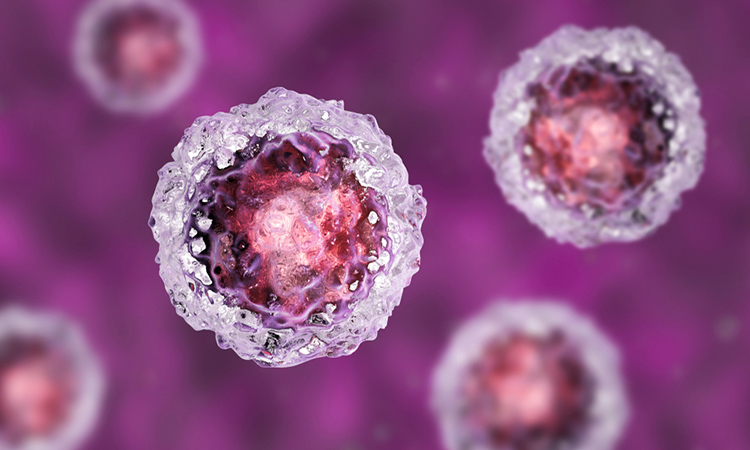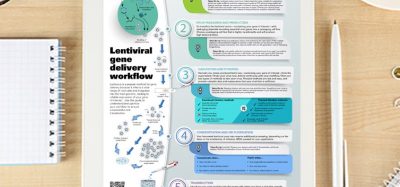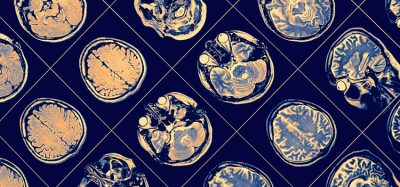New technology optimises mesenchymal stem cell extraction
Posted: 1 December 2023 | Ellen Capon (Drug Target Review) | No comments yet
A continuous sorting technique of stem cells on a DLD microfluidic platform may greatly advance cell therapy.


A groundbreaking new technology that can extract mesenchymal stem cells (MSCs) directly from pure bone barrow, known as bone marrow aspirate (BMA) without dilution has been developed by researchers from the Critical Analytics for Manufacturing Personalised-Medicine (CAMP) Interdisciplinary Research Group (IRG) of Singapore-MIT Alliance for Research and Technology (SMART). The advancement could have great impact in making treatments using MSCs more accessible and efficient, for osteoarthritis, autoimmune and infectious diseases, and neurological disorders.
Mesenchymal stem cells are stromal cells that have the ability to self-renew and also exhibit multilineage differentiation. MSCs can be isolated from a variety of tissues, such as umbilical cord, endometrial polyps, menses blood, bone marrow and adipose tissue. This is because the ease of harvest and quantity obtained make these sources most practical for experimental and possible clinical applications.1
The new method uses a world-first continuous sorting technique on a multichip Deterministic Lateral Displacement (DLD) microfluidic platform, which doubles the quantity of MSCs derived from bone marrow samples and isolates them ten times quicker than traditional BMA stem cell extraction methods that have antiquated centrifugation techniques. This will enable faster drug production in cell therapy manufacturing and benefits bone marrow donors by facilitating a shorter aspiration process. This work was done in collaboration with the Agency for Science, Technology and Research (A*STAR) Bioprocessing Institute (BIT) and the National University Health System (NUHS).
Cell therapy
In the field of cell therapy, cells are used as living drugs to tackle diseases or restore and replaced damaged cells. Many patients have been helped by advances in regenerative medicine and immunotherapy, which offer multiple treatment alternatives to previously problematic diseases.
The challenge of cell therapy has long been obtaining high quality raw materials, such as MSCs. Traditional isolation methods like centrifugation are complicated and inefficient, with a long processing time of two to three hours and a low yield because of difficulties like complicated workflows and osmotic stress. Modern sorting techniques like fluorescence-activated cell sorting (FACS) also have manufacturing limitations as they rely on expensive antibodies and intricate preparation.
However, the SMART scientists have created a stem cell sorting platform that addresses these issues. The platform, which bypasses costly reagents, utilises DLD microfluidic technology to distinguish between stem cells and blood cells. It processed small bone marrow samples of 2.5ml in only 20 minutes and, comparatively to traditional methods, had double the stem cell yield.
Bypassing complex processes
A simple filtration step is the first process that happens to human bone marrow samples that arrive at the laboratory. This removes undesired cells and tissues that may block the chip. Then, when the samples are loaded onto SMART’s sorting platform, MSCs are automatically sorted and collected in outlet reservoirs. The collected cells are then put into a vial for further processing and quantification.
“This will significantly accelerate the development of cutting-edge treatments and improve accessibility for cell therapy.”
Microfluidic technologies leverages cells’ natural properties and removes the requirement for labelling. Fluorescent or magnetic tags to label particular cellular features are used in conventional methods, which may interfere with subsequent analysis and testing, or damage the cells. MSCs are extremely sensitive to the external environment, so any perturbations may unexpectedly change the biology.
Dr Nicholas Tan, lead author of the paper and Research Engineer at SMART CAMP, said: “Our research team at SMART is excited about the possibilities this technology brings to the field of stem cell research and therapy. The successful demonstration of this technology gives us greater confidence to venture into other bioprocessing applications such as leukopheresis with great potential for clinical impact. This will significantly accelerate the development of cutting-edge treatments and improve accessibility for cell therapy.”
“Biomanufacturing and bioprocessing are areas in which I see much potential for applying microfluidics technology to improve overall efficiency and reduce the cost significantly.”
A corresponding author of the paper Dr Jongyoon Han, co-lead Principal Investigator at SMART CAMP and Professor of Biological Engineering and Electrical Engineering at MIT, said: “Even though DLD cell sorting has previously been demonstrated, what is new in this work is that we were able to deploy the technique at a sufficiently high processing flow rate to impact real-world stem cell manufacturing workflow. Biomanufacturing and bioprocessing are areas in which I see much potential for applying microfluidics technology to improve overall efficiency and reduce the cost significantly.”
Future applications
The technology will continue to be refined by assessing the quality of sorted MSCs from human bone marrow samples through methods like differentiation assays and reverse transcription polymerase chain reaction (RT-PCR).
CAMP hope to increase the sorting speed and resolution and fine-tune the system’s design for user-friendliness and portability. They also aim for a 10ml per minute throughput.
Dr Kerwin Kwek, co-lead author of the paper and Research Scientist at SMART CAMP said: ““Our innovative approach marks a paradigm shift in cell sorting, a key process of cell therapy. By harnessing microfluidic technologies to capitalise on cells’ intrinsic properties, we have eliminated the need for cumbersome and expensive labelling methods. It not only streamlines the sorting process but also ensures more accurate and reliable results in medical research.”
He concluded: “This breakthrough, driven by our commitment to advancing scientific frontiers, heralds a milestone in the realm of cellular studies.”
This study was published in Lab on a Chip.
Reference
1 Ding DC, Lin SZ, Shyu WC. Mesenchymal Stem Cells. Cell Transplantation. 2011 February 1 [2023 November 15]; 20(1):5-14. Available from: https://doi.org/10.3727/096368910X
Related topics
Cell Therapy, Microfluidic Technology, Stem Cells
Related conditions
autoimmune diseases, Infectious diseases, Neurological disorders, Osteoarthritis
Related organisations
Agency for Science Technology and Research (A*STAR), Bioprocessing Institute (BIT) at A*STAR, Critical Analytics for Manufacturing Personalised-Medicine (CAMP) Interdisciplinary Research Group (IRG), National University Health System (NUHS), Singapore-MIT Alliance for Research and Technology (SMART)








